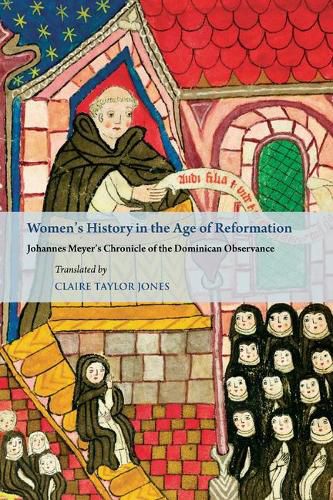Readings Newsletter
Become a Readings Member to make your shopping experience even easier.
Sign in or sign up for free!
You’re not far away from qualifying for FREE standard shipping within Australia
You’ve qualified for FREE standard shipping within Australia
The cart is loading…






In his work The Book of the Reformation of the Order of Preachers, the Dominican friar Johannes Meyer (1422-1485) drew on letters, treatises, and other written records, as well as interviews, oral accounts, and his own personal experience, to record the blossoming of the Observant reform movement. The result is this sprawling, eclectic, yet curiously intimate account of the men – but mostly of the women – who devoted their lives to revitalizing the Dominican order in southern Germany. With his reliance on their accounts and archives and respect for their intellectual abilities and spiritual resolve, Meyer’s treatment of medieval Dominican women provides a model from which today’s historians stand to learn. The introduction contextualizes Meyer’s celebratory work within a more objective historical background; it is followed by a full translation, making this remarkable history available to English-speaking readers for the first time.
$9.00 standard shipping within Australia
FREE standard shipping within Australia for orders over $100.00
Express & International shipping calculated at checkout
In his work The Book of the Reformation of the Order of Preachers, the Dominican friar Johannes Meyer (1422-1485) drew on letters, treatises, and other written records, as well as interviews, oral accounts, and his own personal experience, to record the blossoming of the Observant reform movement. The result is this sprawling, eclectic, yet curiously intimate account of the men – but mostly of the women – who devoted their lives to revitalizing the Dominican order in southern Germany. With his reliance on their accounts and archives and respect for their intellectual abilities and spiritual resolve, Meyer’s treatment of medieval Dominican women provides a model from which today’s historians stand to learn. The introduction contextualizes Meyer’s celebratory work within a more objective historical background; it is followed by a full translation, making this remarkable history available to English-speaking readers for the first time.